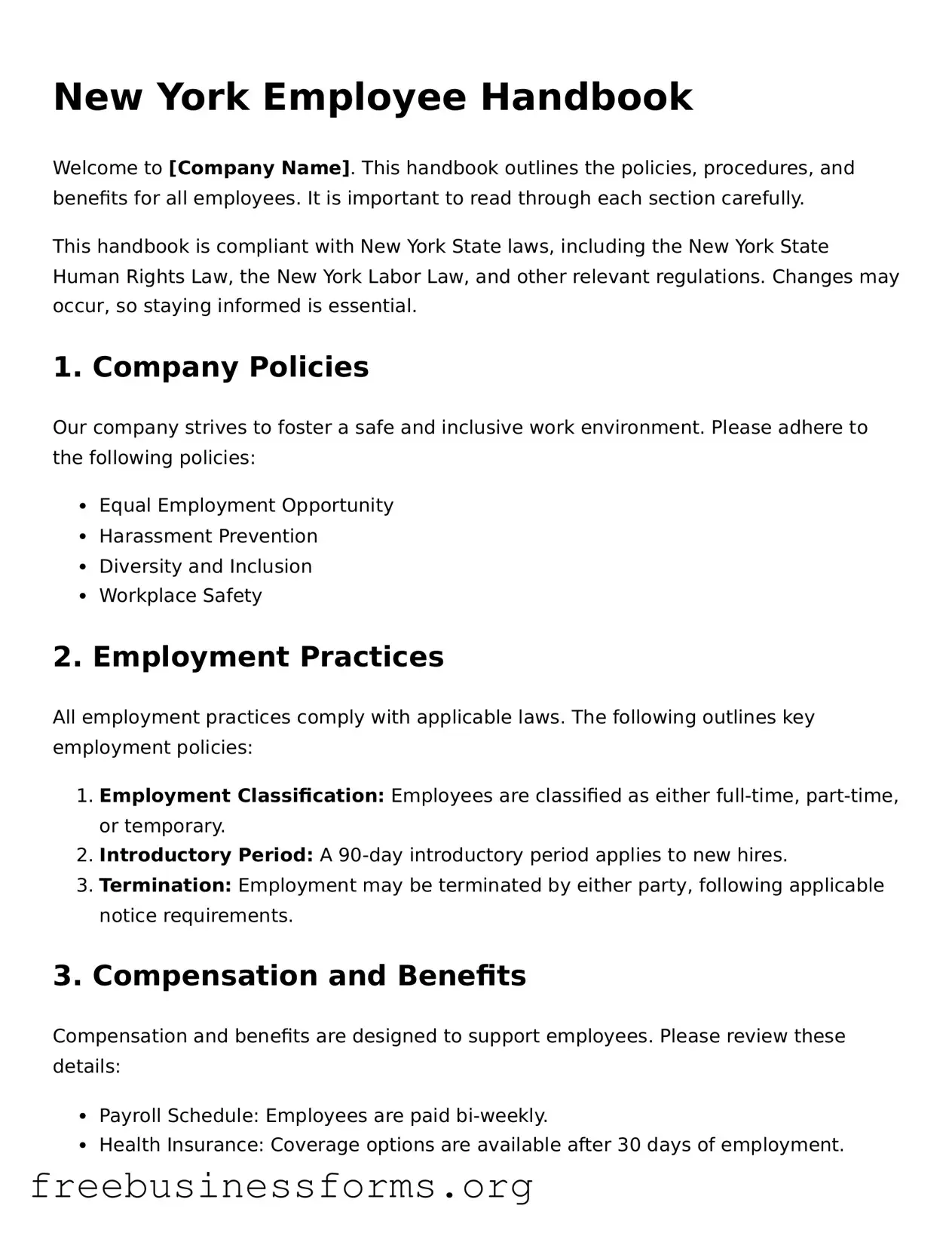New York Employee Handbook
Welcome to [Company Name]. This handbook outlines the policies, procedures, and benefits for all employees. It is important to read through each section carefully.
This handbook is compliant with New York State laws, including the New York State Human Rights Law, the New York Labor Law, and other relevant regulations. Changes may occur, so staying informed is essential.
1. Company Policies
Our company strives to foster a safe and inclusive work environment. Please adhere to the following policies:
- Equal Employment Opportunity
- Harassment Prevention
- Diversity and Inclusion
- Workplace Safety
2. Employment Practices
All employment practices comply with applicable laws. The following outlines key employment policies:
- Employment Classification: Employees are classified as either full-time, part-time, or temporary.
- Introductory Period: A 90-day introductory period applies to new hires.
- Termination: Employment may be terminated by either party, following applicable notice requirements.
3. Compensation and Benefits
Compensation and benefits are designed to support employees. Please review these details:
- Payroll Schedule: Employees are paid bi-weekly.
- Health Insurance: Coverage options are available after 30 days of employment.
- Retirement Plan: A company-sponsored retirement plan is offered.
4. Attendance and Leave
Regular attendance is crucial for a productive workplace. Employees should be aware of the following policies:
- Attendance: Employees are expected to arrive on time and report absences as soon as possible.
- Vacation Policy: Employees earn vacation days based on length of service.
- Sick Leave: Sick leave is provided in accordance with New York State guidelines.
5. Workplace Conduct
We expect all employees to uphold professional standards. Key conduct policies include:
- Code of Conduct
- Dress Code
- Conflict Resolution Procedures
6. Acknowledgment
By signing below, you acknowledge that you have received, read, and understood the [Company Name] Employee Handbook.
Employee Name: _________________________
Date: _________________________
